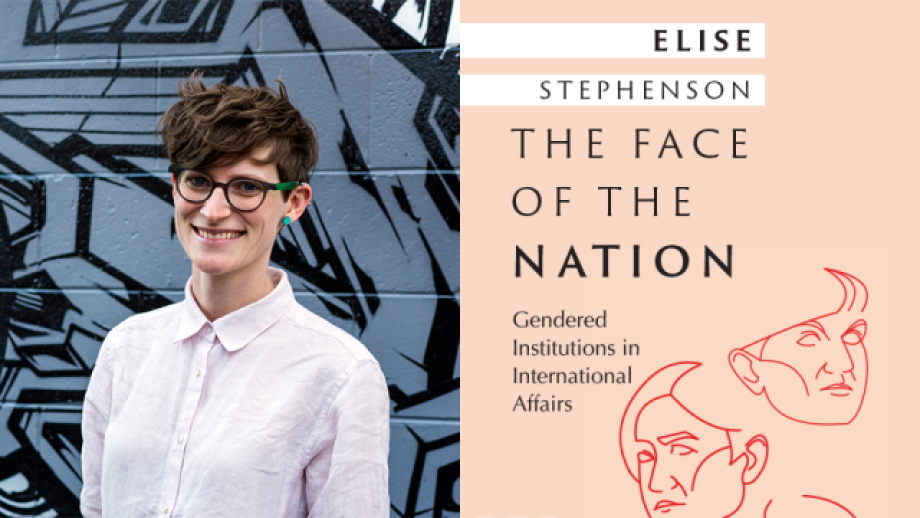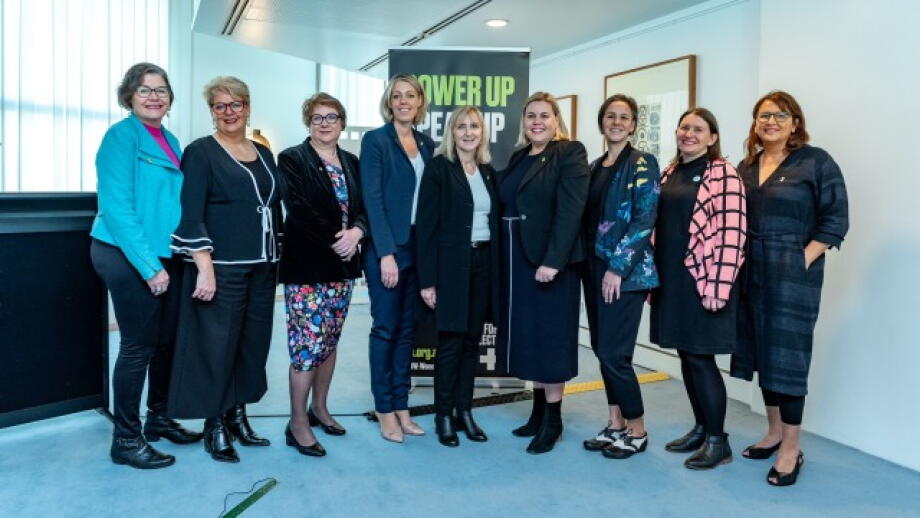Australia has made remarkable strides in gender equality in diplomacy, achieving near parity in its Department of Foreign Affairs and Trade. However, globally, women remain underrepresented in diplomacy, highlighting the need for continued efforts to address gender disparities and ensure equal representation worldwide.
Women’s representation is a natural place to start when thinking about the gendered nature of diplomacy. By gendered nature, I refer to the fact that, globally, women represent less than a quarter of all UN Permanent Representatives and around one in five diplomats on average. Women are represented in even fewer positions if we look at non-traditional, defence or policing “diplomats” of which we are increasingly seeing with the decentralisation of the role of ministries of foreign affairs across a range of international-facing agencies.
From the headline statistics, we still have some way to go, and women often remain critically under-represented.
Yet, this global reality is not true in the case of Australia–for the first time ever. Australia can be proud of leading globally in terms of women’s representation, with women not only being a majority of the Department of Foreign Affairs and Trade (DFAT) overall, and in the Executive Level (EL), but also near parity in Senior Executive Service (SES) positions and heads of mission (HOM) positions. This is remarkable in the history of Australian diplomacy, achieved some 120 years post-federation.
This is critical for several reasons. Credit should be given to leadership vision and political will, plus policy successes, such as the setting of incremental targets through the Women in Leadership (WiL) Strategy and WiL Refresh. Not only did targets exist, particularly focused on increasing women’s representation in leadership and HOM positions, but the secretariat in charge of enacting the strategy was centralised (i.e. it had power and authority), had funding, and had a deadline. All are key indicators that have been important from successful gender equality projects elsewhere.
Yet, the significance of this achievement is also a reminder: at the Global Institute for Women’s Leadership (GIWL), we often talk about the missteps organisations make around gender equality. I outline four key missteps that warrant thinking about in the context of diplomacy, providing direction not just for Australia but elsewhere in thinking “where to” from here.
Firstly, women’s increasing, or equal, representation in diplomacy does not equal equality. In essence, we have to do more than just describe the numbers.
Here we commonly point to examples such as the glass cliff–the pattern that women are disproportionately represented in crisis leadership positions, or in positions that have high levels of precariousness, risk or chance of failure. In fact, my own research uncovered a diplomatic glass cliff in Australia. By analysing women’s representation in diplomacy alongside DFAT’s budget over the last three to four decades, I found that women are achieving parity or near parity in leadership at a point in time where much of the funding and attention is being directed to more securitised agencies in international affairs–Defence and Home Affairs, for instance.
Applied wider to other nations that are experiencing a securitisation of international affairs, this means that women’s functional power in diplomacy may be constrained. Those on the securitised side of the house–national security, intelligence, policing–are typically among our most male-dominated spheres of state, therefore complicating the picture of representation and influence.
It’s also worth thinking about which positions are occupied by women in diplomacy. Women tend to be over-represented in HR roles, aid, and humanitarian affairs, and under-represented in trade, cyber, counter terrorism, or other “hard” areas of international affairs. Research also demonstrates that women tend to be posted to lower status countries and in less prestigious positions. For instance, we are still waiting on our first female HOM in Washington DC and London. Altogether, this points to the need for greater nuance beyond the headline statistics.
Secondly, beyond the numbers, approaches to the “gender problem” in organisations often focus on “fixing” women. This isn’t exclusive to international affairs but may include focusing on investing in leadership development programs which do little to change problematic policies and practices, or investing in initiatives that place a heavy burden on individuals to deliver change. As already pointed out, fortunately DFAT has embarked on a range of structural reforms to things like workplace and spousal conditions and benefits (more on that with relation to queer couples here) and workplace norms and practices. However, it stands that diplomatic corps globally need to be reflective of who is being asked to change–women, or organisations–and what we can do to move more towards a “fix systems, not women” approach, which is likely to have a broader and more sustainable effect on gender equality.
Thirdly, we now have good evidence that finds that gendered patterns in diplomacy do not necessarily decrease over time. In other words, gender inequalities are pretty good at evolving. We may solve one part of the problem by increasing women’s representation, but often this does not automatically translate into more gender responsive–or need I say, feminist–policy and practice. As such, we can be overly optimistic about the progress we have made, which research demonstrates could have negative consequences for gender inequality. For instance, research by GIWL director Professor Michelle Ryan and others found that in medicine, men who overestimated progress towards gender equality were at highest risk of undermining it. In my own research on international affairs, I found that a perception that gender equality had been “solved” reduced individuals and organisations’ ability to talk about the problems that remained.
The final point is that in all of our successes around women in diplomacy, we are still looking at diplomatic corps’ world-wide that do not always do a great job of intersectionality and providing a true representation of their nation across cultural identity, rurality, disability, and other backgrounds. Australia’s first Indigenous female ambassador was only appointed in 2018. A focus of my own work has been asking the question, where are the women of colour in diplomacy? Since then, we have growing representation across other aspects of diversity including of course Penny Wong, our most senior lesbian in government. However, understanding the nuances of how different identity characteristics interact to create greater and lesser privilege and marginalisation, and differing experiences, is critical.
To this end, it is exciting to see strategies such as DFAT’s new International Gender Equality Strategy on the horizon, alongside a first LGBTIQ+ strategy and disability and social inclusion strategy. It is also encouraging that there is reflection, both through the Women, Peace and Security National Action Plan and other means, to see a genuine approach to tackling inequality inside the diplomatic corps as well as in the world of work Australia does on the world stage. Minister Wong’s approach to centring First Nations foreign policy also marks a stark difference from the past, and an approach that will hopefully reap many rewards over the long-term to centre First Nations and feminist approaches to diplomacy.
My hope is that the progress made in traditional diplomatic fields is shared by the increasing number of defence and police attachés and the rise of other kinds of government envoys charged with representing the state. Ultimately, the progress we have made so far is to be celebrated, alongside a strong dose of continued momentum to ensure the gains made are also gains kept.
Elise Stephenson is the Deputy Director of the Global Institute for Women’s Leadership, founded and chaired by former prime minister Julia Gillard. She is a multi award-winning gender researcher with an entrepreneurial background, whose work focuses on intervening at critical junctures to ensure equality in ‘frontier’ international affairs and grand challenges. Her most recent book The Face of the Nation: Gendered Institutions in International Affairs, can be found here.
This article was originally published by The Australian Institute of International Affairs.
Contact
Elise Stephenson
Deputy Director
Climate change, Intersectionality & identity, Politics & international affairs, The space sector, Youth engagement
You may also like
The Face of the Nation: Gendered Institutions in International Affairs
International affairs is undergoing fundamental and rapid gendered change, spurred on by shifting social and governance norms and the adoption of explicit feminist foreign policies in some states.
A $5 million push to boost gender equality and diversity in Australian politics
We're pleased to announce our new project to boost representation and gender diversity in Australian politics.
Lula wins elections in Brazil: What does it mean for women in Brazil, Latin America and worldwide?
GIWL Visiting Fellow, Associate Professor Ligia Carolina Oliveira-Silva, writes about the recent Brazillian election. She asks: what does it mean for women in Brazil, Latin America, and worldwide?





